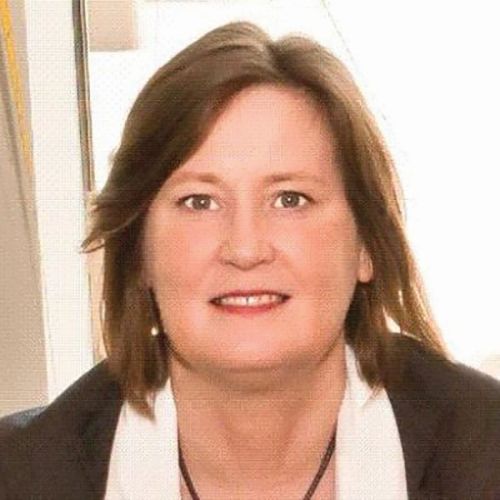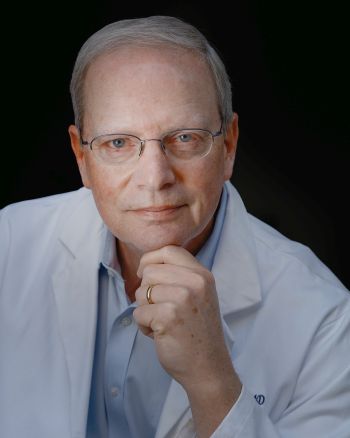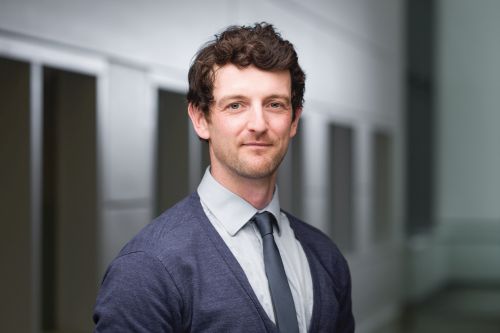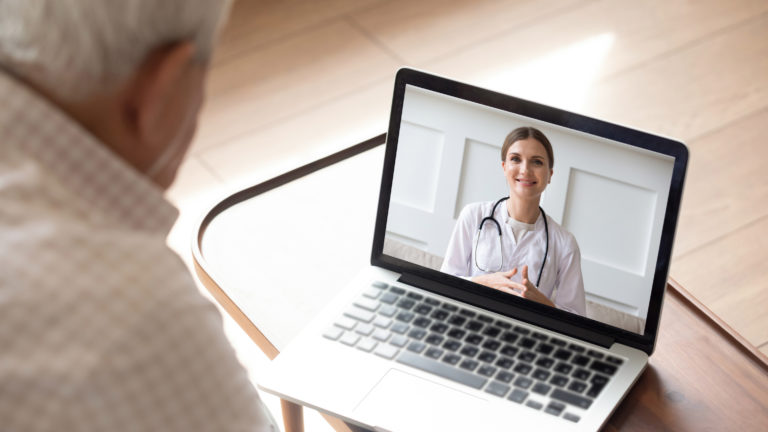Understanding how to better view and use patient data, build patient connectivity, and improve patient-clinician communication are next steps for technology-assisted health care
Electronic health records (EHRs), virtual office visits, and health-related apps are priming the path toward a future vision of medical care in the digital age. That future includes streamlining patient-provider interactions, making good use of the wealth of collected data, and ultimately improving all levels of care from prevention to diagnosis, treatment, and outcomes.
Over the past year, the pandemic served to illuminate how far the field has come in its transition to the digital age, but also pointed up a multitude of obstacles that will need to be overcome in the coming months and years to truly move toward data-informed, technology-assisted, highly coordinated, physician-guided, and patient-involved medical care.
“We’re in a learning curve,” said Wendy Nilsen, acting deputy division director for the Information and Intelligent Systems Division and program director for the Smart Health Program at the National Science Foundation (Figure 1). “On the one hand, we want more patient data to know what’s happening, and we’ve funded a lot of work on things like whether it’s possible to do continuous blood pressure, but on the other, nobody knows what continuous blood pressure actually tells us. I think people are starting to figure out how to learn from that data, and package that data in a way that patients, doctors, and researchers can use it, but that’s a work in progress,” she said.

Some efforts are already under way to facilitate the evolution of medicine, including telehealth advances that have been important during the pandemic, but much is left to do, remarked Robert Wachter, M.D., professor and chair of the department of medicine at the University of California, San Francisco, and author of the New York Times bestseller The Digital Doctor: Hope, Hype, and Harm at the Dawn of Medicine’s Computer Age (Figure 2) [1]. “In 2007, fewer than 10% of hospitals used EHRs. By 2018, it was greater than 90%. That was important and I think it’s made a big difference, but it’s not the end game,” he said. “The end game is: Now that the data are digital, what happens in that ecosystem to create a much more satisfying, modern, integrated, and holistic enterprise that feels unified to the patient, the clinician and the health system? And I think that’s a five- to ten-year journey.”

Connecting with patients
For patients, one of the biggest changes in the healthcare industry over the past year has been the swift pivot from in-person to remote care, notably the move to online office visits. While these telemedicine approaches often worked very well, providing patients with access to care that they might not otherwise receive, that wasn’t always the case.
“Now that we have done what is probably the largest natural experiment of telemedicine ever conducted, we’ve learned a lot, and it’s highlighted a number of disparities in younger and older folks, race and ethnicity, and people with limited English proficiency or English-as-a-second-language barriers,” said Paul J. Barr, Ph.D., associate professor of health policy and clinical practice at Dartmouth College, and expert in patient-clinician communication (Figure 3).
The past year has indeed uncovered gaps, Nilsen agreed. “There are clinics that have lots of resources, can train their staff, and can use remote technology, but there are also clinics that don’t have a lot of resources and perhaps have patient populations that also don’t have a lot of resources, such as rural communities where clinics may not have broadband, and patients may not have a wireless signal within 30 minutes of their house,” she remarked. “We need to address these issues. We need to start building our technology with an understanding of the population that will use it.”

Barr and his group at Dartmouth are in the midst of a large study investigating how the shift to telemedicine affected the quality of communication between clinicians and users from different racial, ethnic, and social groups, as well as under conditions of varying access to telehealth resources. While the results of that study won’t become available until later in 2021, one thing has become clear, he said. “Without careful design consideration and monitoring of telehealth services, we could end up with services that are not as helpful or as effective for different segments of the population. That will really be the big lesson learned from a lot of what has happened over the last year.”
While that study proceeds, Barr is also focusing on incorporating shared decision making into patient-clinician communication [2]. In shared decision making, the clinicians bring medical expertise, the patients bring understanding of themselves, including their preferences, and they jointly discuss medical issues and decide upon treatment options. To that end, he and his www.OpenRecordings.org research group have been developing software that not only provides patients with access to audio or video recordings of their online clinic visits, but also uses natural language processing to identify, highlight, and share any key information from the visit with patients. For this project and others in telemedicine, he noted that rigorous user-centered design is crucial to help ensure the technology is both used and beneficial. “If there is a key message for developers, it would be to take your time, talk to patients, talk to their families, talk to all of the people who you want to actually use the technology, and do it before you even start building.” This is a central theme in Barr’s inaugural course launched at Dartmouth College: “The Patient Revolution: Capturing the Patient Voice in Healthcare Policy and Research.”
Making data work
At-home medical apps and devices are flooding the market, and patients are gathering all sorts of data relating to their health. What happens to that data? So far, the answer is “not much,” according to Barr. During the past year, he began using various exercise apps to track his own heartbeat, weight, and other health information. He acknowledged that clinicians could benefit from seeing such day-to-day monitoring data, but unfortunately, he noted, “My doctor doesn’t see any of it, because there’s no integration of that information into my EHR.”
That is a problem, Nilsen said, and the NSF has begun funding numerous projects to get pertinent data from apps and devices to the patient’s healthcare professional. “We need these systems that are collecting long-term data to be much more interactive,” she said.
Getting data to the doctor is one issue, but an even larger one is taking the data and all of the rest of the patient’s health information, coalescing it, picking out the important bits, and presenting it to the clinician in a useful format. In the old paper-record days, patient notes were concise and in order, so a doctor could flip through a few pages and get the highlights of a patient’s medical history if not every detail, Nilsen described. “Today, you might go to a clinic here and another there, and the reasons you’re going are not clear in your EHR, so the clinician has to read the whole note from each clinic.” When multiple test results from various labs are also added to the mix, not to mention the potential app-data surge, the record quickly becomes so overwhelming that clinicians can easily miss significant information.
Research is now under way to use different tactics to start making better sense of all of the information contained in an EHR, Nilsen said. “For instance, one of our funded projects uses natural language processing to create a timeline for all the visits a patient has,” she said, explaining that this allows the doctor to get a succinct and complete view of current health issues, including those reported by other providers, and then proceed accordingly [3], [4]. To really move forward, however, clinicians need more, Nilsen said. “What they need is a dashboard.”
Building the dashboard
While researching his Digital Doctor book, Wachter spent a day with cockpit computer engineers at Boeing to see how they develop systems that wade through the glut of incoming information and present the relevant parts in a format that the pilot can quickly assimilate. He would like to see that same kind of system in health care.
“Part of what frustrates doctors so much is that we have spent the last ten years trying to collect the data in digital form, which is hugely burdensome because it’s often on the backs of doctors and nurses who are too busy to be mucking around being data-entry clerks. And then we get so little useful intelligence or guidance out of it,” he said.
While EHRs have been helpful, they also have salient limitations in pushing medicine into a true digital age. “They do what they’re supposed to do and they do it fine: They collect the data, and move it around in simple ways,” Wachter said. “But they don’t do anything particularly interesting in terms of decision-support, analytics, use of artificial intelligence, visualization, communication, cloud computing, or any of the ‘modern things’ that you would incorporate if you were building an enterprise-wide digital tool for a healthcare system today,” he said. What they have done, however, is entice large digital companies and start-ups to see the possibilities presented by this mass of digital health data and “try to figure out how to take it, analyze it in ways that are useful, and figure out ways to make health care better or safer or cheaper or more satisfying,” he said. “I think that’s the exciting part of the era that we’re in.”
Still, creating an overarching dashboard won’t be easy. “In health care, you can’t fail fast because you can kill somebody, and the regulatory and privacy barriers are high and make data sharing challenging,” Wachter said. “In addition, the data that’s in the patient chart is often incomplete and frequently tilted slightly to enhance the bill that gets sent off to an insurance company, rather than representing the ground truth of what’s going on with the patient.”
Despite these and other complexities, he sees the drive toward a true digital age of medicine pressing forward. “Health care is a tough nut to crack, and it’s not surprising most of the forays by big technology companies into health care have failed in the past. But I’m optimistic today because they’re all coming back in now, more mature and with their eyes open. Everybody understands that whoever figures this out is going to win the game to transform this incredibly complicated, $4-trillion-a-year business (in the U.S. alone [5]). That’s why the amount of venture capital flowing in and the engagement of the Amazons, Googles, Apples, IBMs, and Microsofts is huge. The stakes are really high, and the prize is enormous if they get it right.”
He added, “It’s going to take time, the friction is real, and the legacy providers—and I’m one of them as a doctor working in a big academic health system—will embrace advances on one level and fight them on another level. But it’s going to be really fascinating to watch over the next decade.”
References
- R. Wachter, The Digital Doctor: Hope, Hype, and Harm at the Dawn of Medicine’s Computer Age. New York, NY, USA: McGraw-Hill, 2017.
- P. Barr, G. Elwyn, and I. Scholl, “ Achieving patient engagement through shared decision-making,’’ in The Wiley Handbook of Healthcare Treatment Engagement: Theory, Research, and Clinical Practice, A. Hadler, S. Sutton, and L. Osterberg, Eds. Hoboken, NJ, USA: Wiley, 2020, ch. 28, pp. 531–550.
- J. S. Hirsch et al., “HARVEST, a longitudinal patient record summarizer,’’ J. Amer. Med. Inform. Assoc., vol. 22, no. 2, pp. 263–274, Mar. 2015.
- HARVEST: Longitudinal Patient Record Summarization. Accessed: Apr. 22, 2021. [Online]. Available: https://people.dbmi.columbia.edu/noemie/harvest/
- Centers for Medicare & Medicaid Services. National Health Expenditure Projections 2018–2027. Accessed: Apr. 21, 2021. [Online]. Available: https://www.cms.gov/Research-Statistics-Data-and-Systems/Statistics-Trends-and-Reports/NationalHealthExpendData/Downloads/ForecastSummary.pdf



